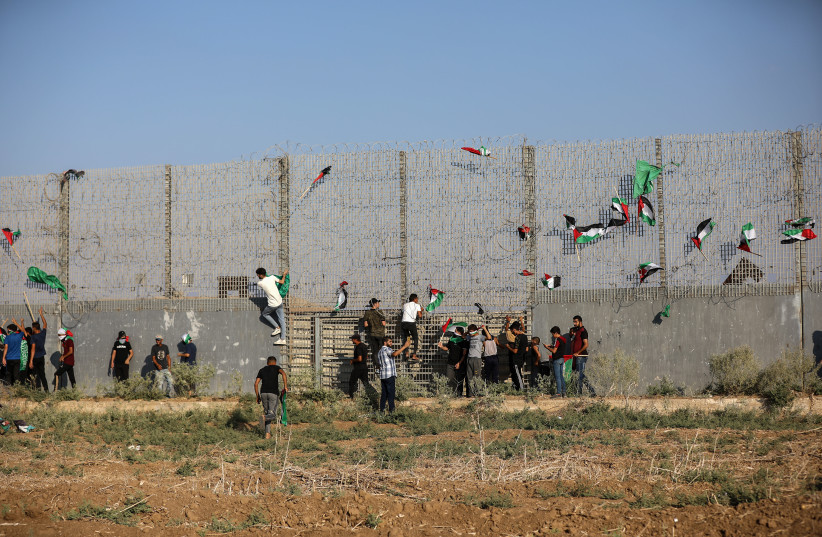Residents of six Israeli towns in the Gaza border area, which are between four to seven kilometers from the border, will start returning home for the first time since they were evacuated following Hamas’s invasion of the South in October.
The first villages that the IDF has cleared to go back will be three in the Ashkelon corridor, followed by three in the Sha'ar Hanegev region.
Technically, these villagers could start to return effective immediately, although some delay in handling practical issues is expected.
After those six, presuming the security situation remains stable and other practical issues progress as hoped, more villages in the four to seven-kilometer range from the border will start to be able to return to the Sdot Hanegev area.
Another round after that will include the Eshkol region, though that is even more dependent on new progress in gaining more operational control in parts of southern Gaza.
Generally, the IDF will first allow village residents to return to areas that are closer to northern Gaza, where the IDF already has had stronger control for the last few weeks, whereas Israeli villages that are closer to southern Gaza will need to wait longer, according to new gains the IDF expects to make.

Next, villages that are zero to four kilometers from Gaza are expected to need to wait longer to return.
One reason is that Hamas still has mortar and rocket firing capabilities and is more likely to be able to still fire on those villages and more often than anything further away.
Another reason is that for a much larger number of villages which were zero to four kilometers from Gaza, Hamas managed to destroy a more significant amount of houses and infrastructure, which will take longer to rebuild before residents can return.
A notable exception is Yad Mordechai, which managed to prevent Hamas from penetrating.
Yad Mordechai’s residents also have a different attitude than some other villages, and ideologically are interested in being the pioneers of returning to the Gaza corridor.
Even without returning to the initial villages farther from Gaza, “returning” will be gradual and initially is expected to involve more residents without little children.
For example, the government has committed to establishing safe school structures in some of these villages by the end of February.
However, that will mean that until the end of February, children from these villages will still only be able to attend “school” at the hotels or other temporary accommodations they have been evacuated to.
This is why families with children are expected to remain at their temporary evacuation living spaces until at least the end of February.
At some point, families with children will be encouraged to return to the South, including with financial incentives of receiving hundreds or more shekels per month for moving back with children.
The purpose of the financial incentives is both to motivate residents to return and also to account for the fact that at the early stages of residents returning, they may not be able to work regularly.
Regarding villages that were more heavily destroyed by the Hamas invasion, but which plan to reconstitute themselves (some villages may not reconstitute themselves at all), their residents may soon transition to living on a Kibbutz or some other space for six to 12 months.
During that six to 12-month period, the Defense Ministry is supposed to rebuild and fix up their villages so they can eventually return.
How the IDF plans to convince returning residents
In terms of convincing the residents that returning is safe, the IDF is presenting with several arguments.
The IDF says its invasion of Gaza, especially northern Gaza, has reduced the ability of Hamas to mount any future invasion.
Next, the IDF says its defensive measures, whether its added border guard force size and placement of defensive forces, have grown significantly both in quantity and quality.
Further, the IDF says it has substantially reduced rocket fire from Gaza from hundreds per day in October to 70 per day in November to around 14 per day the last few weeks (though there were nearly 30 rockets overnight from Sunday to Monday.)
The IDF is not promising that there will be no rockets or sirens but is also promising that there will be much more permanently dedicated and quicker air defenses to guard the Gaza corridor villages.
Moreover, the IDF security concept is completely different now with the freedom to respond aggressively within Gaza to any provocation, something which was much less possible before the invasion of Gaza.
Also, the returning residents will have new levels of IDF troops and defense technologies within their villages and internal village security squads will be more adaptable because individuals will be given safes for their weapons within their homes, rather than needing a central weapon safe, which could be cut off by invaders – to address a major criticism against the government regarding the situation on October 7.
Regarding the quality of life, the IDF said it will maneuver its artillery and tank units in ways to try to reduce the sound and disruption of the daily life of the villages, given that the intensity of the war is expected to soon drop to somewhat lower levels.
However, at the same time, the IDF cannot promise that residents will not see or hear these loud IDF units operating, given that the war is far from completely over.
IDF sources did not even address the possibility of returning northern Israeli residents.
In a recent decision, the government extended legal orders relating to evacuated northern residents until a minimum of the end of February.
This suggested that the question of northern residents returning – which depends on improving Israel’s security posture vis-à-vis Hezbollah – is still a good deal farther away than for southern residents.
